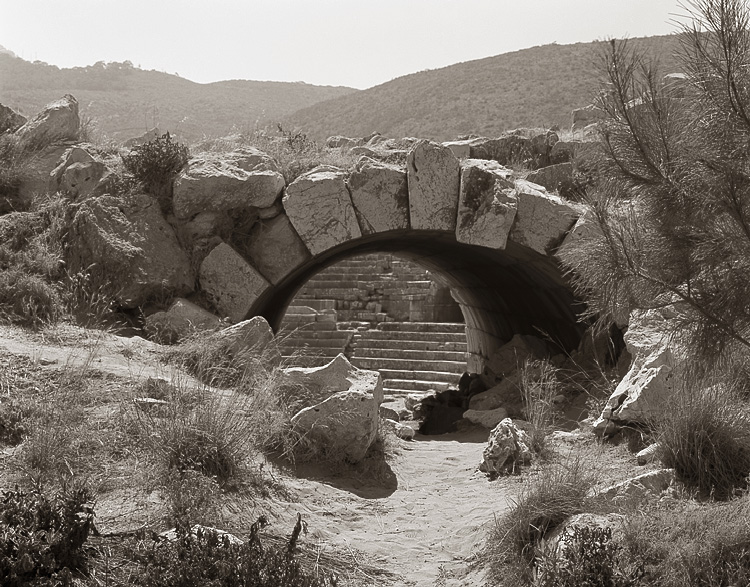Hello. I think I have never photographed under direct sun... So yesterday I did some tests with different development times and EIs for FP4+ in D-76... In the end I preferred 64 with an orange filter (it takes a stop and two thirds), so for incident metering that makes it 20, and scenes under the strongest sunlight here (no sand or water) look fine at 1/125 f/8 1/2 with the orange filter on... By the way, for overcast expansion, no filter of course, I preferred 80 for FP4+, with D-76 too... Different dilutions and agitation schemes as well... And: the expansion for soft light was made for filter 3, while the contraction for sun was made for filter 2. That way it seems to work well.
I had for long wanted to test direct sun... I picked FP4+ because it's a film that's often praised for its good shadow contrast, so "I imagined" it was the best option for a rich shadows contraction... I have HP5+ too, and TMY-2, but I'm using my TMax as my main film for street expansion, and I want to do sun with classic grain and sensitivity, and with old style filtering for blue skies darkening, so I don't want to use TMax for direct sun these days...
The fact is today I read three different posts about HP5+ being a better film for contraction, and FP4+ a better film for expansion... So: I have HP5+, and I have not moved the objects for the sunny FP4+ scene I did yesterday (including pure black, pure white, and Kodak's gray card, and also a black and white portrait in the shades), so I can repeat the exact scene with HP5+, but: I don't know if I'll get direct sun at the very same hour of the day hitting the scene in one or two days or weeks or months...
So in the meantime I'm here asking you what film do you prefer for sunlight between FP4+ and HP5+...
Although I think both films' designs should define the best film for it (sun), all developers/dilutions/agitagion and printing experiences will be very well received... Thanks.
I had for long wanted to test direct sun... I picked FP4+ because it's a film that's often praised for its good shadow contrast, so "I imagined" it was the best option for a rich shadows contraction... I have HP5+ too, and TMY-2, but I'm using my TMax as my main film for street expansion, and I want to do sun with classic grain and sensitivity, and with old style filtering for blue skies darkening, so I don't want to use TMax for direct sun these days...
The fact is today I read three different posts about HP5+ being a better film for contraction, and FP4+ a better film for expansion... So: I have HP5+, and I have not moved the objects for the sunny FP4+ scene I did yesterday (including pure black, pure white, and Kodak's gray card, and also a black and white portrait in the shades), so I can repeat the exact scene with HP5+, but: I don't know if I'll get direct sun at the very same hour of the day hitting the scene in one or two days or weeks or months...
So in the meantime I'm here asking you what film do you prefer for sunlight between FP4+ and HP5+...
Although I think both films' designs should define the best film for it (sun), all developers/dilutions/agitagion and printing experiences will be very well received... Thanks.
Last edited:




 .
.